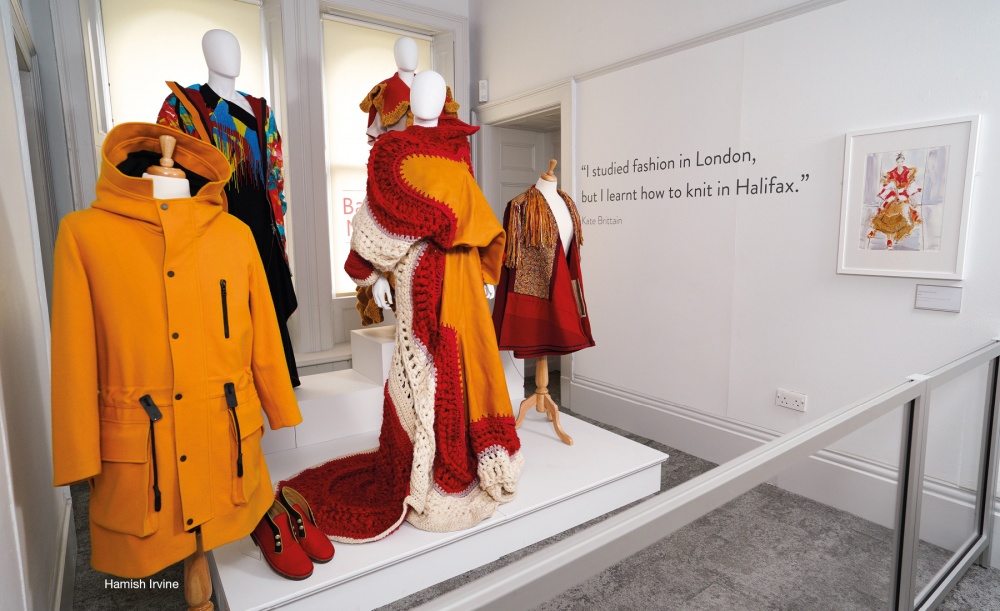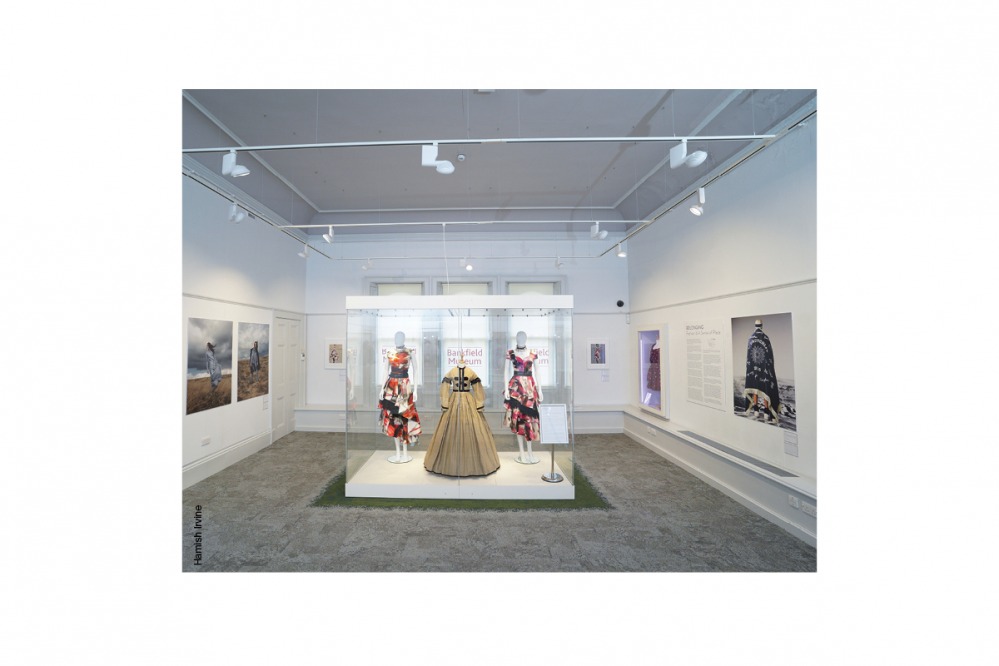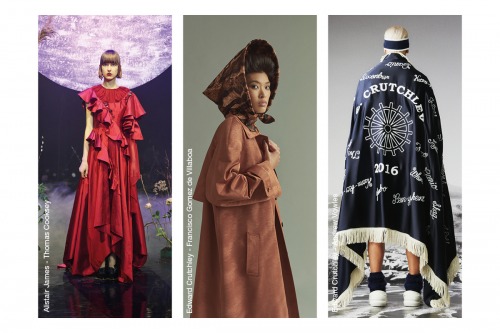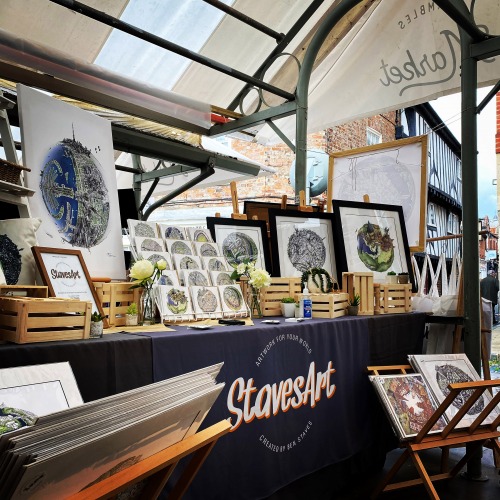Bankfield Museum Celebrates West Yorkshire's Fashion History

From the mills of West Yorkshire to catwalks around the world

The West Riding of Yorkshire has long been held in high regard when it comes to textile production and innovation – and now, West Yorkshire’s influence on the fashion industry is being celebrated and recognised as it deserves. Two Fashion lecturers from Leeds Arts University reached out to Bankfield Museum’s curator, proposing to explore West Yorkshire and its impact upon the international fashion landscape.
Working together, they created Belonging: Fashion & A Sense of Place – an all new exhibition taking place at Halifax’s Bankfield Museum, covering the entire top floor of The Fashion Gallery. The exhibition takes visitors on a journey through the history of West Yorkshire’s textile production, showcasing the work of local and international fashion designers, brands and photographers, including Alexander McQueen, Edward Crutchley and Alistair James.
But how exactly has West Yorkshire influenced the fashion world? It’s not typically renowned for its impact on the industry, or high fashion – unlike London, Paris, New York and beyond. But its deep roots in the fashion industry mean West Yorkshire continues to play a pivotal role in traditional fabric-making and contemporary fashion design, as well as acting as an industrial hub – manufacturing and distributing supplies across the world.
And at Halifax’s Bankfield Museum, the new exhibition is in the beating heart of where so much of the area’s fashion journey began. Elinor Camille-Wood, Curator at Bankfield Museum, commends the town for its work in the industry, which often goes unrecognised. ‘Halifax was once the town of a thousand chimneys,’ she explains. ‘We were at the forefront of textile production, and we still are in many ways – there are manufacturers like Hainsworth, who are still producing in traditional ways, supplying cloth around the world which is used everywhere, from the catwalk to shopping malls in China. The quality of production and material is something that this area does remarkably well.’
Co-curators Nicola Knight and Janie Tweddle of Leeds Arts University brought their knowledge and expertise to the exhibition, expanding on the area’s rich fashion history. ’The West Riding of Yorkshire was once considered the wool capital of the world,’ Janie says. ‘The Piece Hall, which was built in 1779, was a major trading centre for ‘pieces’ of cloth. ‘Pieces’ were 30 yards of woven woollen fabric, produced on a handloom. Halifax became a prominent textile town as a result, with merchants visiting from all over Europe to trade in fabric at the Piece Hall.’
A pre-existing collection of more than 17,000 fashion pieces had been built up since Bankfield Museum first opened in 1887. With this in mind, Elinor saw working with Nicola and Janie as a fantastic opportunity to breathe new life into the existing collection. She was also keen to incorporate contemporary pieces and huge designer names to reflect the area’s influence. ‘Our existing collection is made up of what would be local people’s clothing – we don’t collect the Diors or the McQueens or have that designer collection. From our point of view, it’s been really lovely to pair our archive with contemporary fashion and it’s been very exciting for us.’
The themes explored in the exhibition include the area’s deep-rooted textile legacy, locational themes such as landscape and weather, and social themes including Yorkshire’s community spirit, humour and wit. Plenty of fashion creatives have drawn on these themes within their work too, having either grown up in the area or been inspired by Yorkshire’s rich culture.
The exhibition features a diverse mix of fashion creatives such as Cunnington & Sanderson, a design duo from Silsden who use locally-sourced heritage wools. But the extensive list of designers doesn’t stop there. ’We are really lucky to be able to include the works of Sadie Clayton, Mary Benson and Oliver Moores – who is now the Head of Menswear at Paul Smith,’ Janie says. ‘We are particularly fortunate to bring to Halifax two dresses by Sarah Burton for Alexander McQueen, a heritage trench coat by Burberry, a series of outfits by Wayne and Gerardine Hemingway of Red or Dead, as well as imagery by the renowned photographers Martin Parr and John Bulmer.’

For Alexander McQueen’s autumn/winter collection in 2019, Creative Director Sarah Burton referenced the Brontë sisters. The collection’s gown shapes – long pleated skirts with a fitted bodice – were evocative of a Brontë heroine. The Alexander McQueen dresses that are displayed within the exhibition pay homage to the same era, with Elinor positioning the dresses alongside existing pieces within the original collection from the Brontë era, allowing visitors to appreciate the juxtaposition between contemporary high fashion and dresses which were once worn and loved by local women.
The exhibition also features the work of Kate Britton, a knitwear designer who has created pieces for brands such as Burberry and Rick Owens, with the majority of her graduate collection being bought by Icelandic singer, Bjork. Having grown up in Halifax, Kate has an appreciation for the skills found in West Yorkshire. ‘I might have studied fashion in London, but I learnt how to crochet in Halifax,’ she says.
Edward Crutchley (who grew up in the Yorkshire Dales) also features strongly within the exhibition – and alongside his own fashion label, he is also the Director of Fabrics, Graphics and Soft Accessories for Christian Dior Menswear. His eponymous label often echoes Yorkshire folklore, as he translates his Yorkshire-inspired designs into his collections, including ‘A love letter to home’ – which aimed to capture a deep sense of place and the dynamism of the Yorkshire landscape. ‘It’s so lovely that a piece of West Yorkshire is in Dior and reflected in Edward’s own work – it just shows how powerfully Yorkshire can translate into fashion,’ Elinor says.

‘One of my favourite pieces is by a design duo called Alistair James,’ Elinor continues. ‘They created a beautiful red evening dress which is actually inspired by one of the original pieces in our collection. The designers came to visit the gallery and spotted a locally-made wedding dress that we had by a designer called Alexander Scott from the 1890s, and they picked up on the beauty of the gown. They took the dress away and recreated their own design based on that. That’s what the exhibition is all about – making collections relevant for today. It’s also lovely to think that a dress that we obtained, manufactured and made in Halifax, has now inspired a dress that has gone onto the catwalk and will be worn by celebrities across the world.’
Amongst the famous names, there’s plenty of sparkle, innovation and colourful designs. ‘The public can expect stories such as how a Shoddy and Mungo Mill in Dewsbury provided an alternative design education for a global fashion brand, or how a stylist from Bradford has used fashion to celebrate female empowerment and positivity in the city,’ Janie says. ‘We hope that those who come along to the exhibition will be surprised at how far reaching the impact of West Yorkshire has been on contemporary fashion, and will leave feeling both proud and inspired.’







